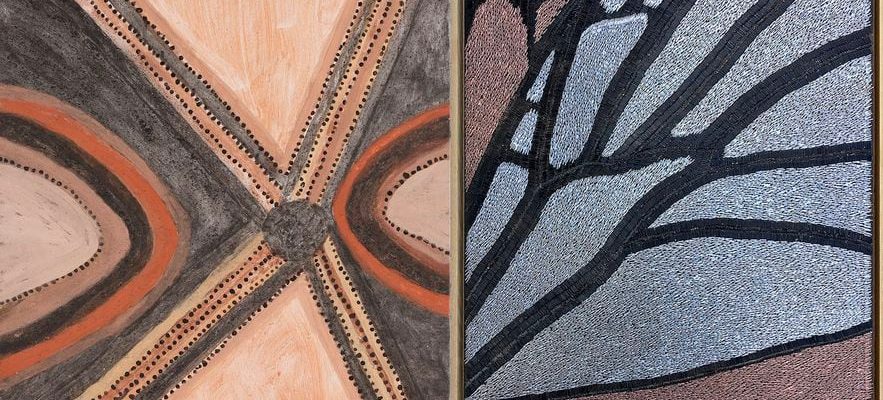For several years, in Europe, museum institutions have enjoyed confronting contemporary artists with their distant elders, by opening the doors to their permanent funds. The creators of today in dialogue with two of yesterday, the vein often pays off. This shows how the proposal from the Opale Foundation, in Lens, in Switzerland, stands out by comparing exclusively contemporary works. Exit the past, even if it concerns Aboriginal art, on the one hand, and creation, all disciplines combined, on the other.
A stone’s throw from the Crans-Montana ski area, on the edge of Lake Louché, in the heart of the Swiss Alps, the lair of Bérangère Primat, perched at an altitude of 1,200 meters, contains the largest collection of contemporary Aboriginal art in Australia on the Old Continent. Since its creation in 2018, its private foundation has made small additions, adding, for its 5th anniversary, an additional wing, where we find a reserve of works, a library and a brand new auditorium, all crafted in the finest materials, which are intended, explains Gautier Chiarini, the director of the place, to “develop bridges with the local population”.
In the temporary exhibition space, the confrontations unfold under the title High Five ! – term marking a greeting with interposed palms (“High five!”). For this audacious participatory project, the museum solicited 26 personalities from the world of Swiss culture. Artists, curators, collectors, authors, but also a neuroscientist and a watchmaker, played the game, namely choosing an Aboriginal piece among the 1,500 in the collection. Primate collection, and respond with a creation created especially for the occasion or already existing. Here, no exhibition curator, but a scenography entrusted to the Pavillon Trois agency, which offers a refined route, providing vanishing lines and projected shadows, which can be understood at a single glance. As on the exterior facades of the building where solar panels reflect the waters of the lake and the surrounding snow-capped peaks, the notion of reflection is at the heart of the system which sees the comparisons resemble “mirror works”. Doesn’t exploring another culture lead to self-reflection? This is the guiding principle of High five! which can be explored in more detail in the publication of the same name, which relates the interviews between the participants and Daniel Browning, a journalist and creator from the Bundjalung and Kullilli communities.
Mick Jawalji Jangala, “Dunggunbilngi”, 2007. Right. : Sasha Huber, “Migratory Monarch”, 2018.
/ © Vincent Girier Dufournier © 2023, Prolitteris, Zurich / Sasha Huber
From the first room, the silver model with an outfit made up of thousands of Swarovski, wood and plastic pearls, feathers and rhinestones makes an impact on the composition Mamungari’nya (2017) by South Australian Anangu artist Manyitjanu Lennon. Kevin Germanier, the young designer from Valais, who chose to dialogue with this colorful acrylic mandala on linen, stands out for his glamorous and eco-responsible approach focused onupcycling, or the recovery of out-of-use materials. Further away, another pair orchestrated by the writer Metin Arditi resonates a miniature icon of the Virgin that he acquired on the Greek island of Spetses with the serpent Ngalyod by Wally Mandarrk, connecting these two visually dissonant works by the spirituality that inhabits them. Of Swiss and Haitian origin, the artist Sasha Huber, who works on the question of colonial and post-colonial relations and their negotiation in the African and Caribbean diasporas, has chosen, for her part, to dialogue with a painting of pigments and natural ochres signed Mick Jawalji Jangala (1920-2013). She found similarities in colors and shapes with her own creation, here a pictorial composition where she introduces staples carrying the symbol of the weapon [l’agrafeuse se dit staple-gun en anglais].
Throughout the confrontations, a mysterious world emerges. With the merit, above all, of highlighting this oldest continuous artistic expression in the world: Aboriginal art.
